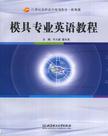模具专业英语教程
2008-8
北京理工大学出版社
叶久新,童长清 主编
270
受到了广大读者的欢迎与好评。也不断有读者来电、来信,表达了希望一书在手便能自学模具英语的愿望。为此,我们在以上两书的基础上编写了这本《模具专业英语教程》。 本书集《模具专业英语--设计、报价、结算》和《模具专业英语全程导学》之精华,在重视模具设计与制造的基础上,对内容进行了调整和充实,既有关于模具设计与制造方面的最新资料,又带有全程导学的性质,更有利于帮助模具专业学生及模具企业界的外贸人员提高阅读和翻译有关模具外文资料以及直接参与模具外贸洽谈的能力。 本书本着便于学习的目的,按照课文、生词注解、重难点词汇及句子注释、练习、课文导读及参考译文的顺序,对教材内容进行科学合理的编排。书后附有练习参考答案,为模具专业学生及从业人士更好地学习提供了具体而有效的帮助。 本书由湖南省模具学会理事长、湖南电子科技职业学院机电工程系主任叶久新教授策划、构思,湖南电子科技职业学院基础课部主任童长清教授组织、整理,两人共同主编。担任本书副主编的为:湖南电子科技职业学院龙艳辉、柳姣、黄倩文、刘秀琴,湖南生物机电职业学院张秀玲;同时参与本书编写的还有湖南电子科技职业学院周玉娥、刘娟、童智,娄底职业学院罗正斌,郴州职业技术学院李灶福,怀化职业技术学院张建清等。 由于编者水平有限,错误之处在所难免,敬请读者批评指正。
本书共分8章,分别为“模具概论”、“模具材料简介”、“冷冲压工艺及模具”、“塑料成型工艺及模具”、“锻造工艺及模具”、“普通机械加工与特种加工”、“计算机在模具设计与制造中的应用”、“模具的报价与合同”。内容精炼,选材新颖;所有课文和图例均附有参考译文,旨在提高模具专业学生阅读、翻译模具专业方面的英文资料及参与模具外贸洽谈的能力。 本书可作为高职、高专“模具设计与制造”专业以及本科“材料成型与控制工程”专业的教材,也可作为各类模具技术培训教材,还可供企业从事模具设计、制造以及模具外贸的人员参考。
Chapter 1 Introduction of Mold(模具概论) Lesson 1 The Definition and Function of Mold Lesson 2 The Classification of Mold Chapter 2 Introduction of Mold Material(模具材料简介) Lesson 3 Steels Reading Materials(1)The Function of Alloying Elements in Alloy Lesson 4 Heat Treating of Steel Reading Materials(2) surface HardeningChapter 3 Press Process and Die Design(冷冲压工艺及模具) Lesson 5 Forming of Sheet Metals Lesson 6 Press Process and Product Applications Lesson 7 Classification of Dies Lesson 8 Presses Reading Materials(3)Drive Mechanisms for Presses Lesson 9 Shear Operation Reading Materials(4) Strudure of Stamping Die Lesson 1 0 Bending Operation Reading Materials(5) An Example of Grouping,Piercing and Bending Lesson 1 1 Drawing Operation Lesson 12 Compound and Progressive Dies Reading Materials(6) Combination and Compound Dies Chapter 4 Plastics Forming and Mold Design(塑料成型工艺及模具) Lesson 1 3 Summary of Plastics Lesson 14 The Structure of Plastics Reading Materials(7) Additives Lesson 15 Classification and Application of Plastics Reading Materials(8) Average Plastics : Lesson 16 Injection Molding Reading Materials(9) Classification of Plastics Mold Lesson 17 Injection Machine Lesson 18 Representative Structure of Injection Mold Lesson 19 Extrusion Molding Reading Maferials(10) Section A Compression Molding Section B Transfer Molding Section C Blow Molding Chapter 5 Forging Processes and Die Design(锻造工艺及模具) Lesson 20 Forging Processes and Die Design Chapter 6 Basic and Special Machining(普通机械加工与特种加工) Lesson 21 Basic Machine Tool Elements Reading Materials(11)Turning Lesson 22 Milling Reading Materials(12) Section A Grinding Section B Machining Process Selection Factors Lesson 23 ElectricaI Discharge MachiningChapter 7 The Application of Computer in Design and Manufacture of Mold and Die (计算机在模具设计与制造中的应用) Lesson 24 Computers and CAD/CAM Reading Materials(13)CAD/CAM DefinedChapter 8 Quotation and Contract for Mo1d and Die(模具的报价与合同) Lesson 25 Introduction of Quotation for Mold Reading Materials (14) Section A Quotation Strategies and Terms of Payment Section B Computerized Price Quoting System for Injection Mold Manufacture Lesson 26 Mold Making Contract Keys to Exercises
Lesson 3 Steeels Steels (first made in China and Japan around 600--800 AC) are generally divided into thecategories of carbon steels and alloy steels (including tool steels). Carbon Steels Carbon steels are used extensively in tool construction. Carbon steels are those steels whichonly contain iron and carbon, and small amounts of other alloying elements. Carbon steels are themost common and least expensive type of steels used for tools. The three principal types of carbonsteels used for tooling are low carbon, medium carbon, and high carbon steels. Low carbon steelcontains between 0. 05% and 0. 3% carbon. Medium carbon steel contains between 0. 3% and0. 7% carbon. And high carbon steel contains between 0. 7% and 1.5% carbon. As the carboncontent is increased in carbon steel, the strength, toughness, and hardness also increase when themetal is heat treated.
